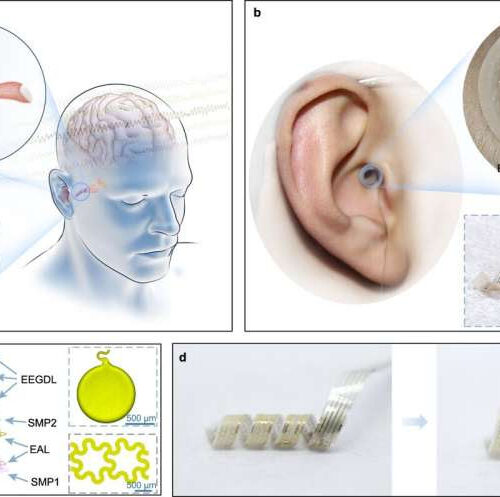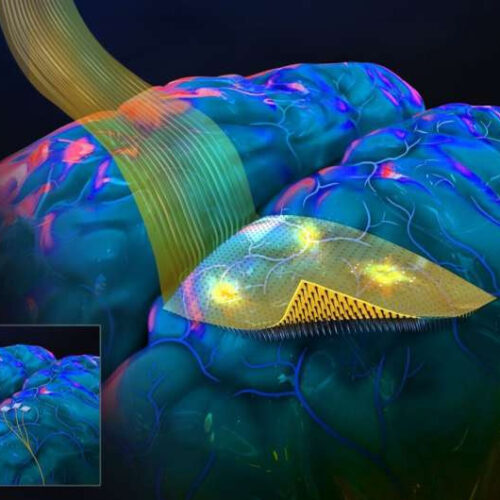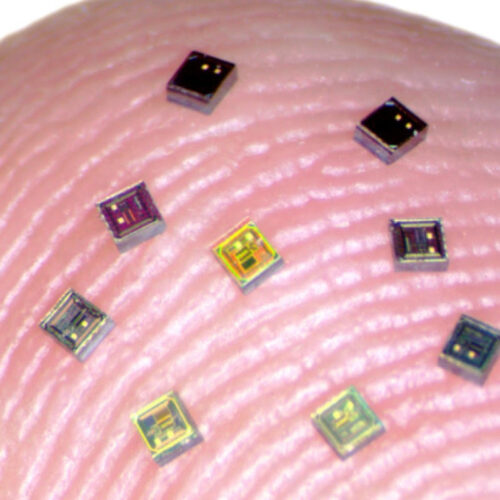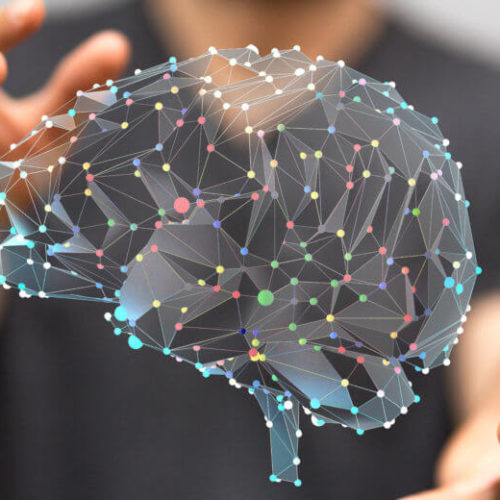by Bob Yirka, Medical Xpress Design of in-ear bioelectronics. a Schematic diagram of in-ear EEG recording by SpiralE. b Pictures of SpiralE conformally adapting to the inner wall of the ear canal. Upper-right inset is a photograph captured by a medical endoscope. Lower-right inset shows the irregular three-dimensional structure of SpiralE after removal form ear....
Tag: <span>brain-computer interface</span>
A new brain-computer interface with a flexible backing
by University of California – San Diego Artist rendition of the flexible, conformable, transparent backing of the new brain-computer interface with penetrating microneedles developed by a team led by engineers at the University of California San Diego in the laboratory of electrical engineering professor Shadi Dayeh. Credit: University of California – San Diego Engineering researchers have...
“Deepfaking the Mind” Could Improve Brain-Computer Interfaces for People with Disabilities
Synthetic neurological data created using generative adversarial networks could speed up training of brain-computer interfaces, new study finds. Researchers at the USC Viterbi School of Engineering are using generative adversarial networks (GANs) — technology best known for creating deepfake videos and photorealistic human faces — to improve brain-computer interfaces for people with disabilities. In a paper...
Thought-to-Text Brain-Computer Interface: Interview with Florian Solzbacher, Chairman of Blackrock Neurotech
DECEMBER 28TH, 2021 CONN HASTINGS EXCLUSIVE, NEUROLOGY, NEUROSURGERY, REHAB Blackrock Neurotech, a medical technology company based in Salt Lake City, created a suite of brain-computer interface systems with the goal of empowering patients to have increased independence and quality of life. This latest technology aims to restore written communication in patients who have difficulties in...
Tiny implants could dramatically improve brain-computer interfaces
By Ben Coxworth August 12, 2021 A group of the neurograins, displayed on a human finger for scaleJihun Lee / Brown University Whether they’re being used for research or for restoring lost capabilities to the disabled, brain-computer interfaces (BCIs) show a lot of promise. They could soon be much more effective, thanks to the development of tiny new sensors....
Researchers Use Computer Chip In Patient’s Brain To Restore Sense Of Touch After Spinal Cord Injury
by Chris Melore COLUMBUS, Ohio — A scientific breakthrough has given a man in Ohio the chance to reclaim a major part of his life after a devastating injury. Ian Burkhart suffered a severe spinal cord injury in 2010 while on vacation from Ohio University. He dove into a wave and struck an unseen sandbar...
Imagined movements can alter our brains
Brain-computer interfaces (BCI) work on the principle that measurable changes in electrical brain activity occur just by thinking about performing a task. Signals can be read, evaluated, and then converted into control signals via a machine learning system, which can then be used to operate a computer or a prosthesis. In a recently published studyresearchers...
Use of brain-computer interface, virtual avatar could help people with gait disabilities
Non-invasive method can help people re-learn to walk Researchers from the University of Houston have shown for the first time that the use of a brain-computer interface augmented with a virtual walking avatar can control gait, suggesting the protocol may help patients recover the ability to walk after stroke, some spinal cord injuries and certain...





